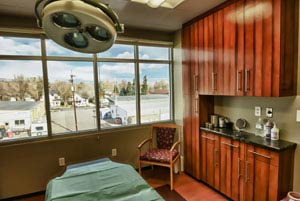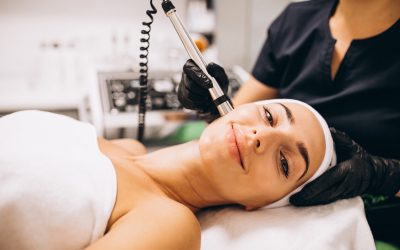Chemical peels have become an increasingly popular non-surgical treatment for individuals looking to rejuvenate their skin, reduce wrinkles, and address issues like acne or pigmentation. While most people are familiar with the results a chemical peel can offer, one common question often goes unanswered: How long does a chemical peel actually take? In this article, we’ll go beyond the basics and explore not only the duration of a chemical peel procedure, but also the nuances that influence the time commitment, including recovery, skin types, and the depth of the peel. Understanding the full timeline is key to making an informed decision about whether a chemical peel is right for you. Whether you’re new to skin care treatments or considering your next step in aesthetic enhancement, this comprehensive guide will give you all the details you need to know.
What Is a Chemical Peel?
A chemical peel is a cosmetic procedure designed to improve the texture and appearance of the skin by exfoliating the outer layers. During the treatment, a solution made of acids (like glycolic, salicylic, or trichloroacetic acid) is applied to the skin to exfoliate and remove dead skin cells, stimulating new skin growth. What makes chemical peels unique is their ability to address both superficial and deeper skin concerns. Superficial peels can treat minor imperfections like fine lines or dullness, while medium and deep peels penetrate deeper into the skin to address more severe issues like acne scars, sun damage, or deeper wrinkles. Unlike over-the-counter exfoliants, chemical peels offer more targeted, effective results, which is why they are considered a go-to for non-surgical skin rejuvenation. The depth of the peel determines the procedure’s complexity and the time it takes to heal, making it crucial to choose the right one for your skin’s needs.
What to Expect During the Procedure
During a chemical peel, you can expect a series of distinct steps that vary depending on the depth of the peel. For a superficial peel, the process begins with a thorough cleansing of your skin to remove oils and debris. A mild acid solution is then applied, which may cause a slight tingling or warmth. This sensation is temporary and typically subsides once the solution is removed. For deeper peels, a numbing cream may be applied to ensure comfort, as the stronger acids can cause a more intense stinging or burning feeling. As the solution sits on the skin, you might feel tightness or mild discomfort. The dermatologist or technician will monitor the peel’s progress, ensuring it’s left on for the appropriate amount of time based on your skin type and treatment goals. Afterward, soothing creams or cooling gels may be applied to help calm the skin. While the procedure is typically safe, those undergoing more intense peels may experience a greater level of post-treatment care.
Chemical Peel Recovery Time
Chemical peel recovery time varies depending on the depth of the peel. For superficial peels, most people experience minimal downtime, with skin typically appearing slightly red or irritated for a few hours to a day. Peeling usually begins within 2-3 days, and the skin heals within a week, revealing smoother, brighter skin. Medium-depth peels often require 5-7 days of recovery, with noticeable peeling, redness, and possible swelling lasting a few days. For deeper peels, recovery is more involved, often taking 1-2 weeks for the skin to fully heal. During this time, the skin may be swollen, red, and scabbed as it rejuvenates. It’s essential to follow post-treatment care instructions, including avoiding sun exposure and using moisturizing creams, to ensure proper healing and minimize complications. While the recovery process can be a bit uncomfortable for deeper peels, the results can be transformative, leading to smoother, more youthful-looking skin.
Factors Influencing Chemical Peel Duration and Recovery
1. Depth of the Peel
The most significant factor influencing both the duration and recovery of a chemical peel is its depth. Superficial peels, which only target the outermost layer of the skin, typically have a shorter duration and faster recovery time. These peels generally involve minimal discomfort and require only a few days for full recovery. In contrast, medium and deep chemical peels penetrate more deeply into the dermis, causing greater skin exfoliation and potentially longer recovery periods. Deeper peels can involve more intense peeling, redness, and swelling, extending the healing process to one to two weeks or more.
2. Skin Type and Sensitivity
Individuals with sensitive skin may experience a more pronounced reaction to chemical peels, resulting in longer recovery times. People with darker skin tones may also need to exercise more caution, as they are at a higher risk of hyperpigmentation following the peel. On the other hand, those with more resilient skin types may recover faster with minimal discomfort. It’s important to consider how your skin reacts to treatments, as this can directly influence both the procedure’s intensity and the recovery timeline.
3. Post-Treatment Care
Adherence to post-peel instructions plays a significant role in recovery time. Following a tailored skincare regimen, such as moisturizing regularly and applying SPF, helps speed up the healing process. Skipping these steps or exposing the skin to direct sunlight can prolong the healing phase and increase the likelihood of complications like scarring or pigmentation changes.
4. Peel Strength and Chemical Formulation
The specific acids used in the peel, such as glycolic, salicylic, or trichloroacetic acid (TCA), can also impact both the duration of the procedure and the recovery process. Stronger acids tend to require more time for the skin to regenerate, leading to a longer recovery phase. For instance, while glycolic acid may cause mild irritation, TCA used in deeper peels can result in significant swelling and more intense peeling.
Benefits of Chemical Peels in Skin Rejuvenation
Chemical peels offer a unique and effective approach to skin rejuvenation by targeting multiple skin concerns at once, making them a versatile option for enhancing skin texture and tone. One of the lesser-discussed advantages of chemical peels is their ability to promote collagen production. By removing dead skin cells and stimulating the deeper layers of the skin, peels encourage the regeneration of fresh, youthful skin. This process can lead to improved skin elasticity, helping to reduce the appearance of fine lines and wrinkles over time.
In addition to wrinkle reduction, chemical peels are beneficial for individuals dealing with uneven skin tone, hyperpigmentation, or acne scars. By exfoliating the skin’s surface, chemical peels allow for a more even distribution of pigment and can help lighten dark spots.
Another often overlooked benefit is the improvement in skin texture. Chemical peels not only remove dead skin but also encourage the production of new, healthier skin cells, resulting in a smoother surface. This is especially beneficial for those with rough, bumpy skin or clogged pores. Additionally, they are an excellent non-invasive option for those seeking to revitalize their skin without the need for extensive downtime or surgery.
Chemical Peel Consultation: What to Expect
A chemical peel consultation is an essential first step to determine if the treatment is right for you. During this consultation, your provider will assess your skin type, concerns, and medical history to recommend the most suitable peel for your goals. While most consultations involve a discussion about the procedure itself, a comprehensive assessment goes beyond surface-level analysis.
A truly thorough consultation will include a detailed conversation about your lifestyle, skincare routine, and any previous treatments you’ve undergone. This is particularly important because certain medications or existing skin conditions can impact how your skin will respond to a chemical peel. You may also discuss any potential risks or side effects, such as hyperpigmentation for darker skin tones or prolonged redness.
Importantly, your provider should offer realistic expectations for recovery, including how to manage downtime and how long it will take to see noticeable results. Some clinics may even perform a patch test on a small area of your skin to ensure you do not experience an adverse reaction. This personalized approach ensures that the treatment is tailored specifically to your needs for the best possible outcome.
Conclusion
Chemical peels are a powerful tool in achieving smoother, more youthful-looking skin. By understanding the procedure, recovery, and benefits, you can make an informed decision about whether it’s the right option for you. If you’re ready to rejuvenate your skin and address specific concerns like acne, hyperpigmentation, or fine lines, a chemical peel might be the solution.
Visit us at BVPlastic Surgery in Boulder, CO, or call (303) 449-6666 to schedule a consultation with our experienced team. Let us help you achieve the glowing skin you’ve always wanted!





